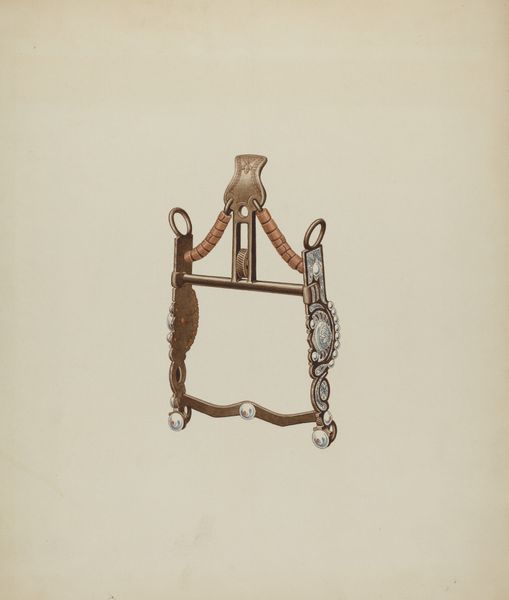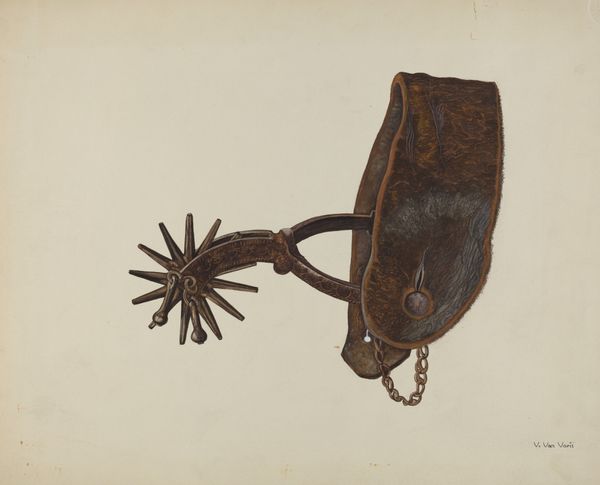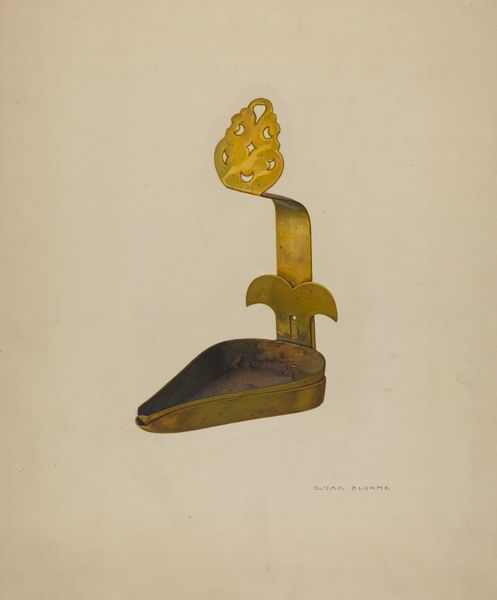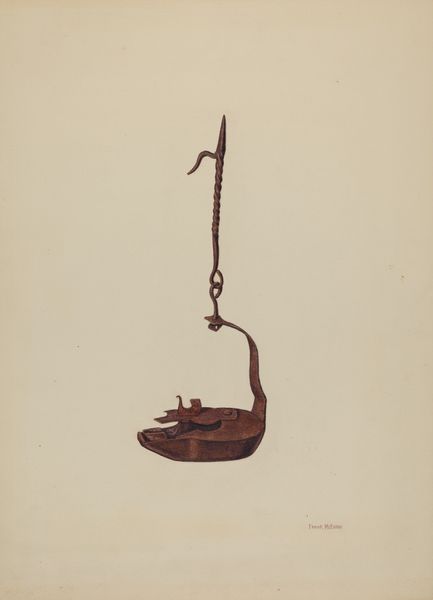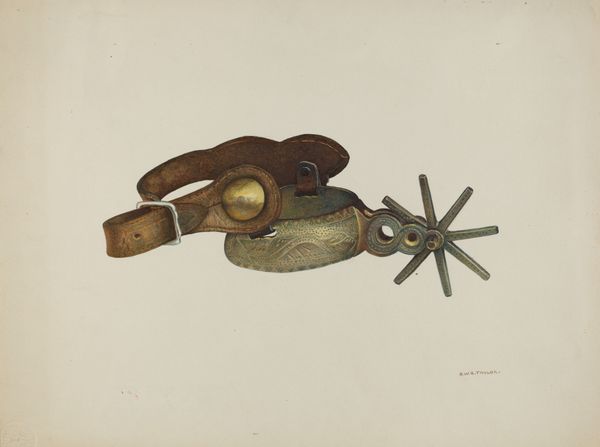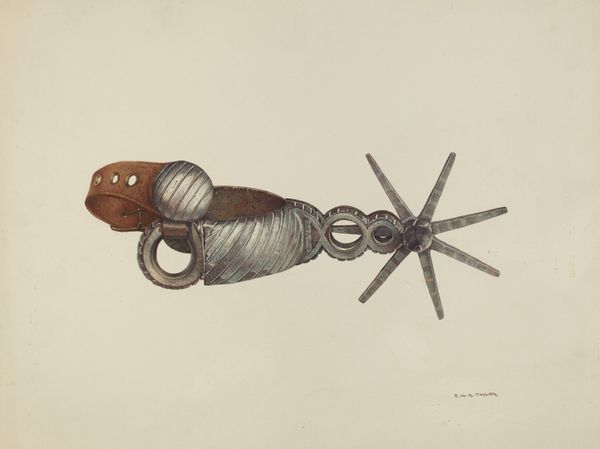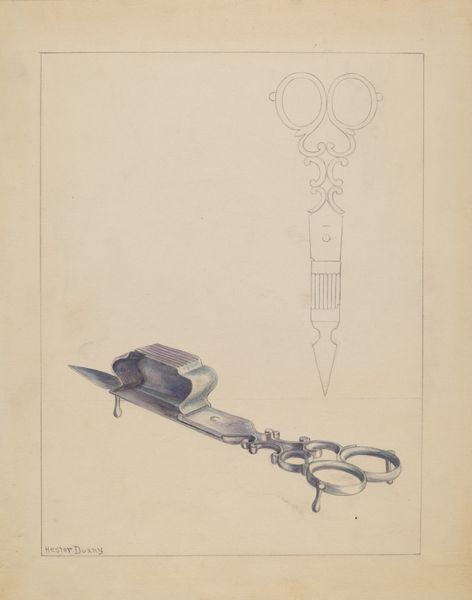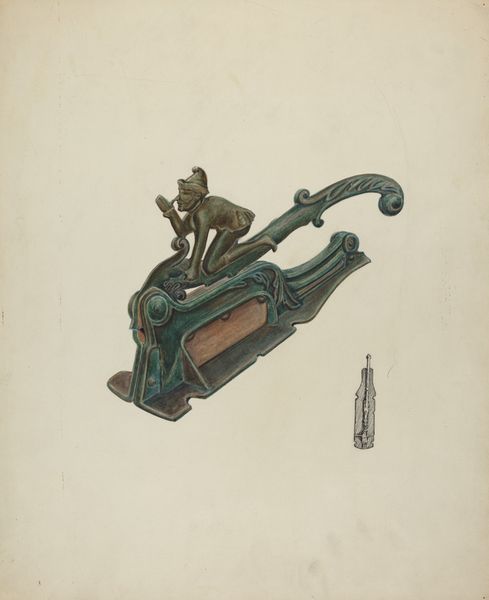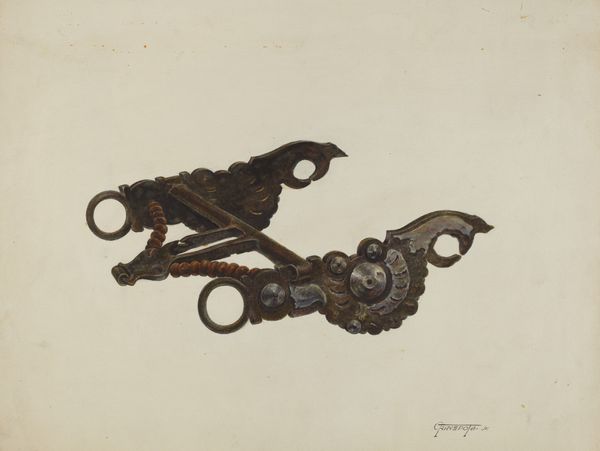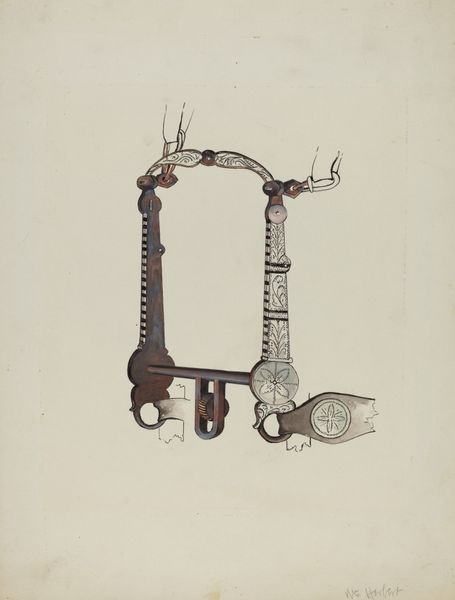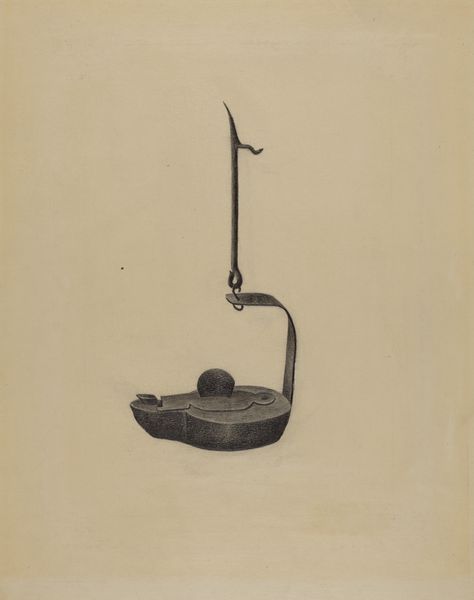
drawing, painting, watercolor
#
drawing
#
painting
#
watercolor
#
academic-art
#
realism
Dimensions: overall: 26.8 x 34.6 cm (10 9/16 x 13 5/8 in.) Original IAD Object: tray: 10" long; 3 3/16" wide; snuffer: 6 5/8" long
Copyright: National Gallery of Art: CC0 1.0
Curator: This artwork is entitled "Pewter Tray and Snuffers" and was created by Carmel Wilson around 1938, using watercolor and drawing techniques. Editor: My first impression is of faded elegance. There’s something melancholic about these antique objects rendered in such muted tones. You can almost smell the history emanating from the rusted metal and tarnished pewter. Curator: I'm immediately drawn to the craft involved. Look at the detail in the rendering of the pewter—you can almost feel the texture, the slight imperfections of the casting process. Wilson seems less concerned with portraying grandeur and more interested in the honest representation of well-used objects. Editor: I see it as a quiet commentary on societal shifts, perhaps a subtle nod to the decline of aristocracy and the rise of more quotidian, functional items. Snuff, after all, was a very class-conscious habit. These tools once represented refinement but now seem to linger as relics. Curator: Perhaps, but I see it more practically. The choice of pewter, the detailed rendering of the rusting iron... It emphasizes the material qualities themselves. Wilson's labor is evident in the artwork, highlighting how human intervention transforms raw materials into useful and, eventually, historical objects. The medium is part of the story here. Watercolor allows for a delicate yet detailed observation of the degradation process, mimicking how material things transform over time. Editor: It's not just material degradation, but a deeper commentary on societal changes. It asks us to examine our relationship to material objects and how those objects represent social history. Who owned these objects? Who made them? How did their function and value change over time reflecting changing social behaviors? Curator: It brings up interesting points about the intersection of utility and aesthetics and forces us to reconsider how we assign value. Perhaps Wilson is encouraging us to look beyond inherent value to find meaning and maybe even beauty in decay. Editor: Ultimately, this work invites reflection on shifting power structures and the human stories intertwined with even the simplest of objects. I wonder what would Wilson would have felt about our discourse today... Curator: It really underlines the cyclical nature of creation, use, and eventual obsolescence, doesn’t it? A life cycle captured in delicate watercolor.
Comments
No comments
Be the first to comment and join the conversation on the ultimate creative platform.
